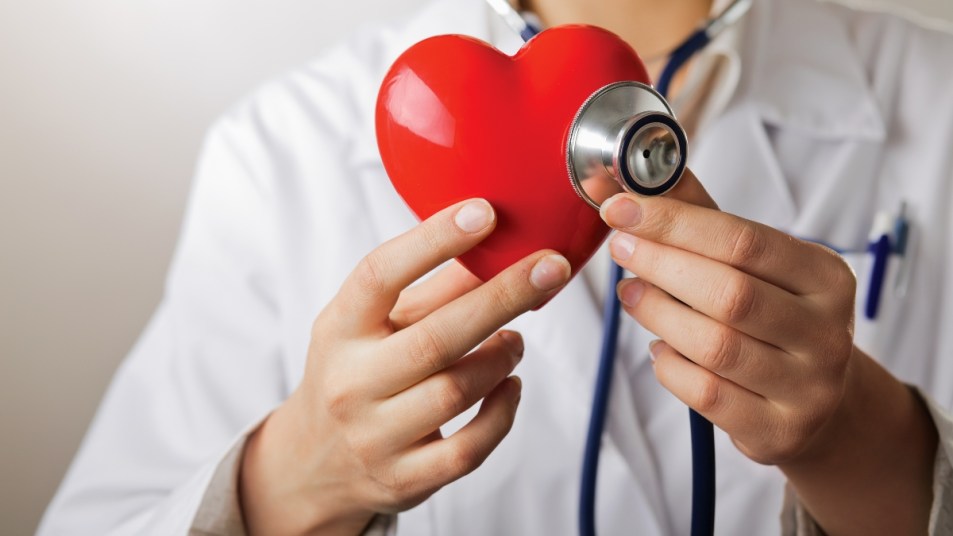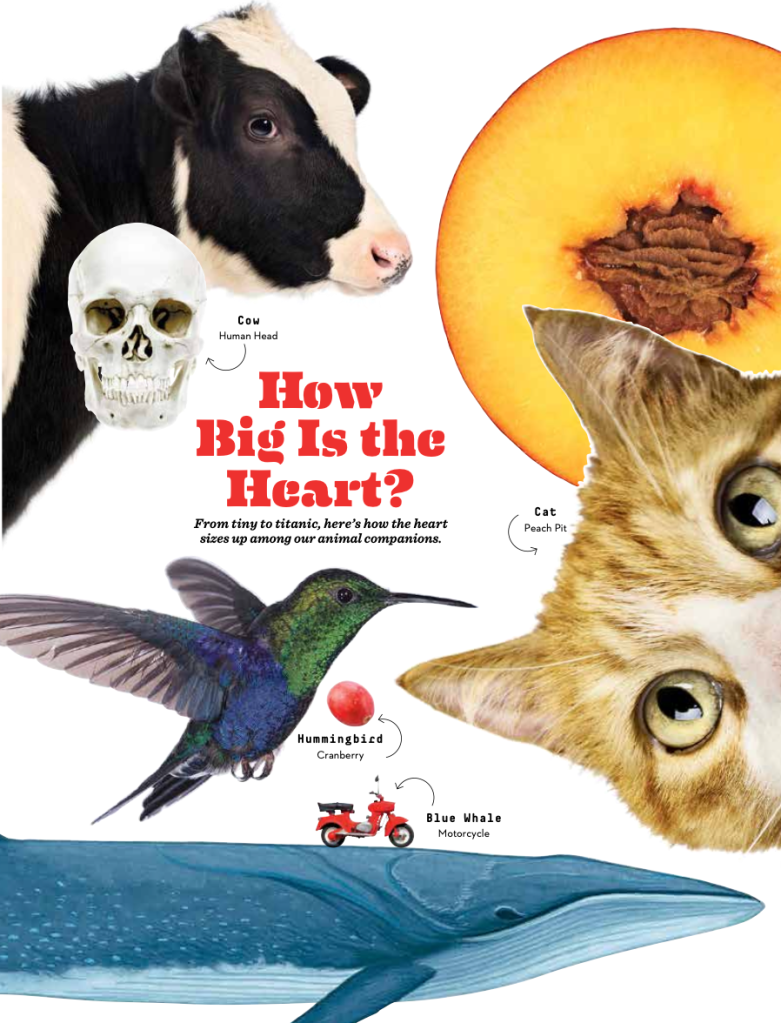A Healthy Heart Starts With Knowing How It Works — Here’s a Guide to Your Ticker
Take care of your heart.

The heart is an amazing organ, responsible for sending blood to every corner of your body, providing the oxygen, energy, and nutrients you need to survive. It’s only the size of a clenched fist, but it’s got an outsized impact on every single living cell you have. Your heart is the linchpin of your cardiovascular system, which also includes all the blood vessels that carry blood throughout the body. Consider these facts about the power of the heart.
How It Works
The heart is divided into four chambers, and its walls are made up of muscle cells, which give it the strength it needs to squeeze or pump blood. The upper chambers are known as the atria and the lower chambers are the ventricles; a partition of thick muscle (known as a septum) divides the right side from the left. Each side works like a team. An atrium fills with blood, then pushes it into the ventricle. The ventricle then squeezes and pumps the blood out of the heart. And while the ventricles are squeezing, the atria refill and get ready for the next contraction.
Heart valves help keep blood flowing from the atria to the ventricles, as well as control the direction of blood as it leaves the heart. The valves open up like a door so the blood only moves in one direction — forward. An electrical system, called the cardiac conduction system, controls the heart’s rhythm by causing cardiac cells to contract.
The right side of the heart is responsible for pumping blood to the lungs, where blood cells pick up fresh oxygen. That oxygenated blood is then returned to the left side where it can be pumped to the rest of the body. Oxygen-poor blood is returned to the right atrium, where it goes back to the lungs and the whole shebang starts all over again — about 1,000 times a day.
How Your Blood Travels
Your blood travels through vessels that stretch through the entire body, beginning at the heart. Arteries carry oxygenated blood away from the heart. They tend to be tough on the outside and have a smooth interior layer of cells that allow blood to flow easily, as well as a strong middle layer that helps pump blood throughout the body. Veins carry blood back to the heart — they aren’t as thick (or strong) as arteries, and they contain valves to make sure the blood keeps on its one-way path forward, even as it works against gravity. Capillaries are the small, thin blood vessels that connect arteries and veins. Their thin walls allow oxygen, carbon dioxide, and nutrients to pass to and from the cells in the organs. It takes less than one minute to pump blood to every cell in your body.
Love That Lub-Dub
The beating sound of your heart is caused by the valves opening and closing. The “lub” part comes when the mitral and tricuspid valves, which help direct blood flow between the atria and the ventricles, close shut. The “dub” happens when the aortic and pulmonary valves close, allowing blood to be squeezed out of the heart.
Helping the Heart
Like the rest of your organs, your heart needs its own supply of oxygen and nutrients — and while it’s constantly full of blood, it doesn’t get any nourishment from what it’s pumping. Rather, the heart has its own network of arteries, aka the coronary arteries. When cholesterol and fatty deposits build up inside the coronary arteries, forming plaque, it can prevent the heart from getting the nutrients it needs to do its job. That’s the essence of coronary artery disease.

Learn the Lingo
Med-speak can be frustrating for those of us without a science background. Here are some terms you may hear used by your doctor or healthcare practitioner when it comes to your cardiovascular well-being, with help from the National Institute on Aging and the Cleveland Clinic.
AFib
Short for atrial fibrillation, this is an irregular heartbeat where the top two chambers of the heart don’t beat in a synchronized rhythm with the bottom two chambers. It can sometimes produce blood clots that can enter the bloodstream and lead to a stroke.
Angina
Chest pain or discomfort that occurs if an area of your heart muscle doesn’t get enough oxygen-rich blood. The pain can occur in your shoulders, arms, neck, jaw, or back, or it may feel like pressure or squeezing in your chest or can resemble indigestion.
Aorta
The major vessel that carries oxygenated blood from the heart to the body.
Arrhythmia
An irregularity with the heart rate or rhythm: It can beat too fast, too slow, or erratically.
Arteriosclerosis
A condition that can occur when the large arteries become stiffer and less elastic, resulting in high blood pressure. These changes are caused by deposits of collagen and scar tissue as well as a decrease in the molecules that make the arterial wall flexible and elastic.
Artery
A vessel that carries blood away from the heart. Arteries generally carry oxygenated blood.
Atherosclerosis
A type of arteriosclerosis, it’s the buildup of plaque within the arterial wall (arteriosclerosis is when arteries thicken and stiffen).
Atrium
The chamber of the heart that collects blood returning from the rest of the body. The right atrium collects deoxygenated blood and passes it to the right ventricle. The left atrium collects oxygenated blood from the lungs and passes it to the left ventricle.
Bradycardia
Excessively slow heartbeat.
Cardiomyopathy
A general term for diseases of the heart muscle.
Coronary Artery Bypass
A surgical procedure whereby a new route is created around plaque within a coronary artery, using part of a vein as a graft.
Coronary Heart Disease
This occurs when plaque builds up inside the coronary arteries, which supply oxygen-rich blood to your heart muscle.
Electrocardiogram
Also called an ECG or EKG, this test is used to help diagnose a heart attack or arrhythmia by recording your heart’s electrical activity.
Heart Attack
Also known as myocardial infarction, this happens when the flow of oxygen-rich blood to a section of heart muscle suddenly becomes blocked and the heart muscle can’t get enough oxygen. If blood flow isn’t restored quickly, the section of heart muscle begins to die.
Congestive Heart Failure
This occurs when the heart can’t pump enough blood to meet the body’s needs.
Hypertension
A condition in which a person’s blood pressure is abnormally high. For normal adults, the pressure should be less than 130 mmHg systolic and less than 85 mmHg diastolic. Pressures above 140/90 indicate a mild form of hypertension; above 180/110 is considered severe.
Mitral Valve
Valve that separates the left atrium and the left ventricle and prevents back-flow from the ventricle to the atrium.
Pulmonary
Relating to the lungs. Sometimes this term is used to denote the pulmonary valve, which is the valve that prevents back-flow of blood from the pulmonary artery into the right ventricle.
Stenosis
Constriction of a passage. Used typically when there is a narrowing of a valve opening (for example, mitral valve stenosis) or blood vessel.
Stroke
A stroke occurs if the flow of oxygen-rich blood to a portion of the brain is blocked. Without oxygen, brain cells start to die after a few minutes.
Sudden Cardiac Arrest
Also known as cardiac arrest or sudden cardiac death, this occurs when the heart suddenly stops beating, so blood stops flowing to the brain and other organs. Cardiopulmonary resuscitation (CPR) should be started immediately. The heart rhythm can be restored by an automated external defibrillator (AED).
Tachycardia
Excessively rapid heartbeat.
Tricuspid Valve
Valve that separates the right atrium and the right ventricle and prevents back-flow from the ventricle to the atrium.
Vein
A vessel that carries blood toward the heart.
Ventricle
The chamber of the heart responsible for pumping blood to the rest of the body. The right ventricle pumps deoxygenated blood to the lungs; the left ventricle pumps oxygenated blood to the body.
A version of this article appeared in our partner magazine, The Complete Guide to Heart Health, in 2019.












